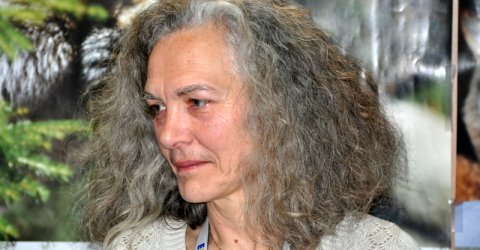
Personal Account: Gordana Beltram on Managing Slovenia's Škocjan Caves
I became passionate about wetlands in the early 1990s when I started working on my PhD on wetland management in Slovenia. After successfully defending my thesis, I began to work at the Slovenian Ministry of the Environment and got more and more involved with wetlands and the Ramsar Convention. During Ramsar COP6 in Brisbane (1996), karst and cave hydrological systems were first mentioned as a wetland type. At COP7 in Costa Rica in 1999, subterranean wetlands were added to the formal list of wetland types, and the Slovenian Škocjan Caves were used as an example. These caves were then added to the Ramsar list of wetlands of international importance. Many years later in 2009 I had an opportunity to manage the area for a period of four years.
It was a privilege to work on the ground with a very devoted team of some 20 experts in different fields, local people and local authorities. A few words about the site: it is a classical karst area in the south-western part of Slovenia, designated as a UNESCO World Heritage Site in 1986, a Ramsar Site in 1999 and a Biosphere Reserve in 2004. The area protected as a regional park is small, covering just over 400 ha of surface area with an outstanding underground river canyon. The catchment area however - the buffer zone - covers over 45,000 ha and includes the entire surface river catchment up to the border with Croatia. Downstream the river flows underground to Italy, thus ultimately connecting three countries. In addition to its natural values the area has important archaeological and cultural heritage values. It has a history of cave exploration, with local people acting as guides to the mysterious underground world.
In managing the area I had to respond to many challenges. The main one was working with local people and local communities on the one hand, while simultaneously managing visitors on the other. Tourism is the main source of income for the management of the protected area. There are some 75 people living within the protected area and fewer than 20,000 in the whole catchment. The local mayors were very supportive, particularly the mayor of Divača, where the protected area is situated. They were proud to be part of a success story, sharing their heritage with visitors from all over the world. In preparing the second five year management plan for the area I had to find the right balance between conservation and development. It took my team a year to prepare the draft, involving the local communities, relevant institutions and different sectors. It was a great challenge to produce good results.
These four years of experience enriched my knowledge of working with people on the ground, and helped me to understand their needs and expectations, which could then feature properly in the sustainable development and conservation objectives for this fascinating area.
Managing people and managing an internationally important area was much more demanding than I anticipated. Personally, being a woman leader was an immense challenge and responsibility. At the same time I felt rewarded with every task that was accomplished and every success that was achieved. It was an altogether enriching experience, although there were also difficult moments and difficult decisions I had to take. Overall the experience made me personally stronger and more confident, thanks to the positive feedback I received.
By Dr Gordana Beltram, Ministry of the Environment and Spatial Planning, Slovenia
Chair of the Ramsar Standing Committee 2002-2005